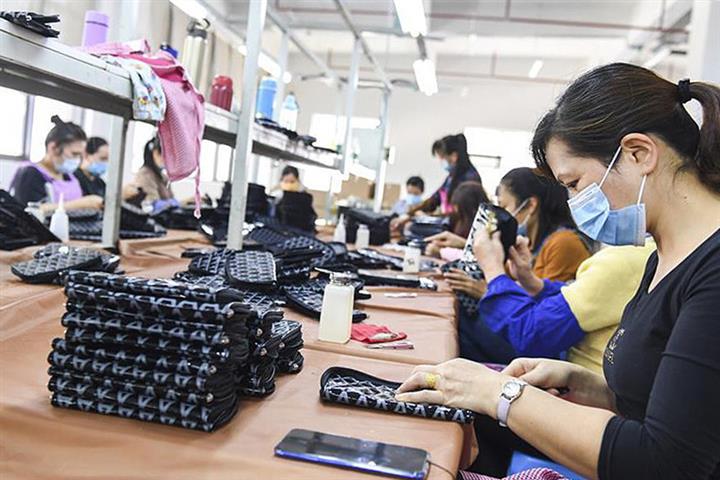 China’s Jobs Market Likely Perked Up in First Half, Experts Say
China’s Jobs Market Likely Perked Up in First Half, Experts Say(Yicai Global) July 9 -- China’s key employment gauge likely bounced back in the first half to the level seen before the outbreak of Covid-19, boosted by demand amid the country’s rapid economic rebound, according to experts. It will remain steady and improve in the second half as small and mid-sized firms get more policy support.
The situation in the first six months of the year was good, with the surveyed jobless rate trending lower, Zeng Xiangquan, director of the China Institute for Employment Research at Renmin University, told Yicai Global.
The job market sentiment index likely rose significantly, with the index for blue-collar jobs hitting a record high in May, due to higher demand, including foreign trade orders, Zeng said.
China will release first-half economic data next week.
Widespread vaccination not only helps China's economy to develop further, but also helps the ongoing recovery in the foreign trade market, said Yao Kai, director at Fudan University's Research Center for Development of Global Scientific Innovation Talents. Improvements were also seen in market prosperity and the services sector, Yao added. These all have an important role in promoting employment.
The recovery in areas the public contact more often, including culture and travel, catering and hotels, has been slower, but they may rebound faster as more people receive vaccines, Yao added. The tourism sector may restart overseas travel in the second half, which is also good for employment.
State Help
Government support for small and micro firms also underpinned employment in the first half. The sentiment index for such businesses in the first six months was below that of large businesses, but was above that for mid-sized firms, Renmin University's Zeng said.
The government has introduced policies to support for micro, small and mid-sized companies since the pandemic's outbreak. Various measures, including big tax and fee cuts, more targeted loans, lower interest rates, loan repayment holidays, and job subsidies, offset the pandemic’s impact on jobs at micro and small enterprises.
From January to May, China's cities and towns added 5.74 million jobs, hitting 52.2 percent of the annual target, according to data from the National Bureau of Statistics. In May, the surveyed urban jobless rate was 5 percent, down 0.1 point from a year earlier, while the rate in the 31 main cities surveyed was unchanged from April at 5.2 percent.
Despite the generally positive employment situation, there are still some structural issues, according to the experts. For example, university graduates find it hard to find suitable work while firms face hiring problems, and higher youth unemployment is still a prominent issue.
Chinese universities, recruiters and employers should better communicate jobs information, strengthen internships and skills training, increase flexible employment options and encourage entrepreneurship to increase the employment rate among graduates, Fudan University's Yao said.
Editors: Tang Shihua